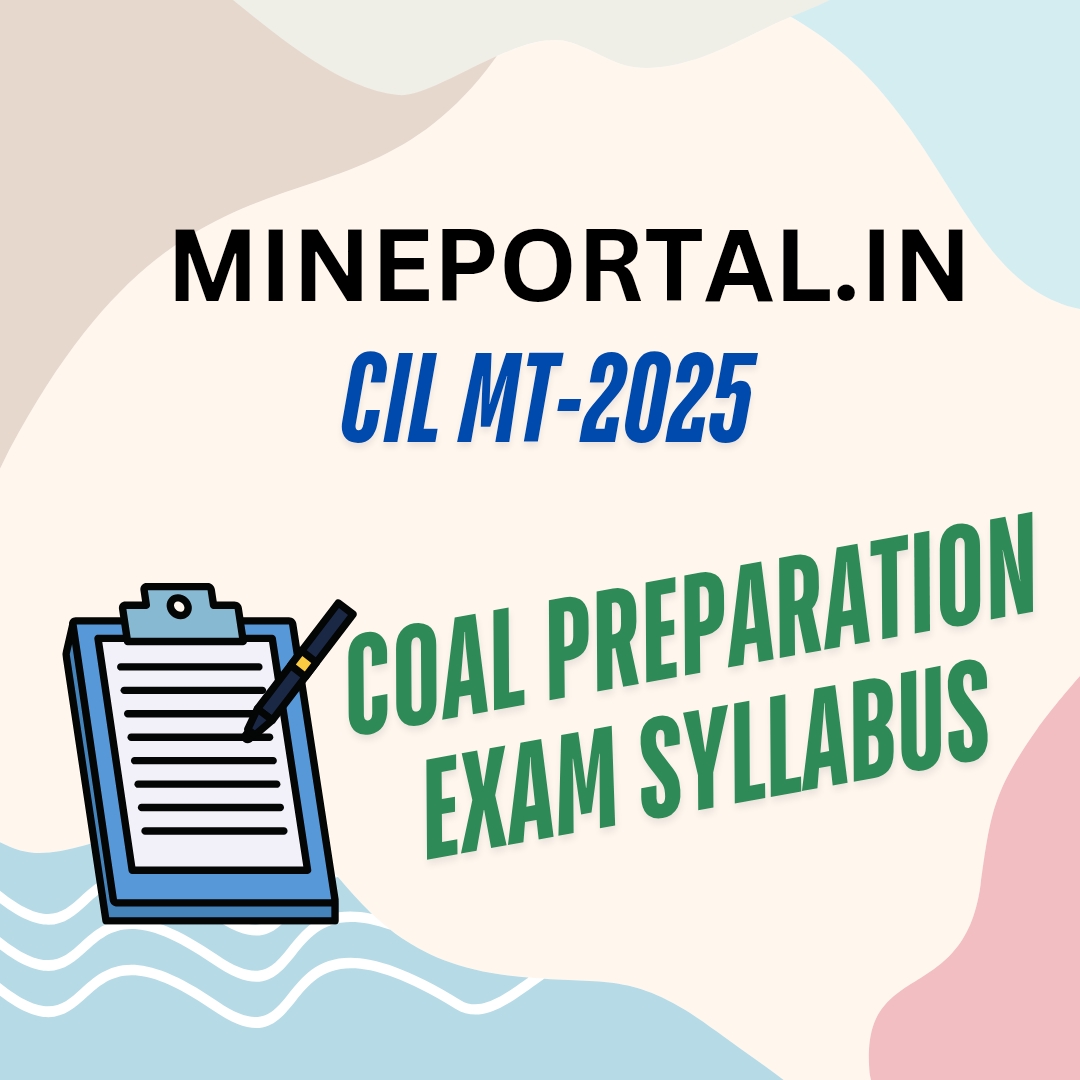
CIL MT-2025 COAL PREPARATION EXAM SYLLABUS
COAL INDIA LTD MANAGEMENT TRAINEE EXAM-2025 COAL PREPARATION EXAM SYLLABUS
Section 1: Engineering Mathematics
Linear Algebra: Matrix algebra, Systems of linear equations,
Eigen values and eigenvectors.
Calculus: Functions of single variable, Limit, continuity and differentiability, Taylor series, Mean value theorems, Evaluation of definite and improper integrals, Partial derivatives, Total derivative, Maxima and minima, Gradient, Divergence and Curl, Vector identities, Directional derivatives, Line, Surface and Volume integrals, Stokes, Gauss and Green’s theorems.
Differential equations: First order equations (linear and nonlinear), higher order linear differential equations with constant coefficients, Cauchy’s and Euler’s equations, Initial and boundary value problems, Laplace transforms, Solutions of one-dimensional heat and wave equations and Laplace equation.
Complex variables: Complex number, polar form of complex
number, triangle inequality.
Probability and Statistics: Definitions of probability and
sampling theorems, Conditional probability, Mean, median, mode and standard
deviation, Random variables, Poisson, Normal and Binomial distributions, linear
regression analysis.
Numerical Methods: Numerical solutions of linear and
non-linear algebraic equations. Integration by trapezoidal and Simpson’s rule.
Single and multi-step methods for numerical solution of differential equations.
Section 2: Process Calculations and Thermodynamics
Steady and unsteady state mass and energy balances including
multiphase, multi- component, reacting and non-reacting systems. Use of tie
components; recycle, bypass and purge calculations; Gibb’s phase rule and
degree of freedom analysis.
First and Second laws of thermodynamics. Applications of
first law to close and open systems. Second law and Entropy. Thermodynamic
properties of pure substances: Equation of State and residual properties,
properties of mixtures: partial molar properties, fugacity, excess properties
and activity coefficients; phase equilibria: predicting VLE of systems;
chemical reaction equilibrium.
Section 3: Fluid Mechanics and Mechanical Operations
Fluid statics, Newtonian and non-Newtonian fluids,
shell-balances including differential form of bernoulli equation and energy
balance, Macroscopic friction factors, dimensional analysis and similitude,
flow through pipeline systems, flow meters, pumps and compressors, elementary
boundary layer theory, flow past immersed bodies including packed and fluidized
beds, Turbulent flow:
fluctuating velocity, universal velocity profile and pressure
drop.
Particle size and shape, particle size distribution, size reduction and classification of solid particles; free and hindered settling; centrifuge and cyclones; thickening and classification, filtration, agitation and mixing; conveying of solids.
Note*- The above syllabus is indicative in nature and not Exhaustive.


No comments added yet!